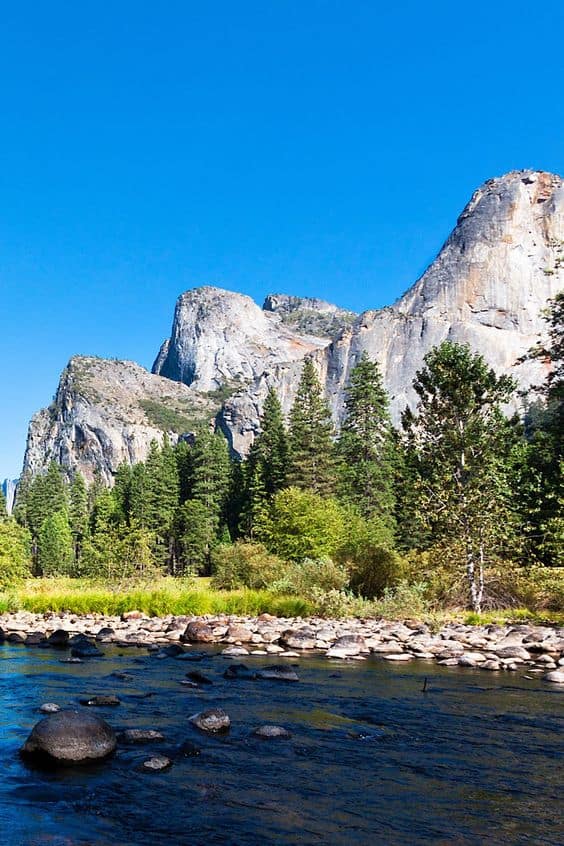
Yosemite National Park is a world-renowned destination known for its awe-inspiring natural beauty, including towering granite cliffs, cascading waterfalls, and ancient forests. The park’s unique geology has played a crucial role in shaping its landscape, and is a key reason why it is considered one of the most spectacular natural wonders in the world.
Formation of Yosemite Valley
The Yosemite Valley is the centerpiece of Yosemite National Park and is known for its towering granite cliffs and spectacular waterfalls. The valley was formed over millions of years by the erosion of the Merced River, which carved its way through the Sierra Nevada Mountains.
The Sierra Nevada Mountains are made up of a variety of rock types, including granite, which is known for its durability and resistance to erosion. The granite cliffs in Yosemite Valley are the result of millions of years of erosion, as the Merced River cut through the rock and carved out the valley.
The formation of the Yosemite Valley was also influenced by glaciers, which played a significant role in shaping the landscape. During the last Ice Age, which ended around 10,000 years ago, glaciers covered much of the Sierra Nevada Mountains. As these glaciers moved, they carved out the valleys and shaped the mountains, including the formation of Half Dome and El Capitan.
Granite in Yosemite National Park
Granite is a dominant rock type in Yosemite National Park and is responsible for the park’s iconic landscape. Yosemite Valley is surrounded by towering granite cliffs, including Half Dome and El Capitan, which attract climbers and hikers from all over the world.
Granite is an igneous rock, which means it was formed from molten magma deep within the earth’s crust. The granite in Yosemite was formed around 95 million years ago during the Cretaceous period, when the Sierra Nevada Mountains were formed.
Granite is known for its durability and resistance to erosion, which is why it has been able to withstand millions of years of weathering and erosion. The granite cliffs in Yosemite are particularly resistant to erosion because they are composed of large, interlocking crystals that are difficult to break apart.
Glaciers in Yosemite National Park
Glaciers played a significant role in shaping the landscape of Yosemite National Park. During the last Ice Age, which ended around 10,000 years ago, glaciers covered much of the Sierra Nevada Mountains, including Yosemite.
As these glaciers moved, they carved out valleys, created U-shaped valleys, and shaped the mountains. They also formed many of the park’s spectacular waterfalls, including Yosemite Falls, Bridalveil Fall, and Vernal Fall.
Glaciers also had a profound impact on the soil and vegetation in the park. As they moved, they scraped away soil and vegetation, leaving behind bare rock and gravel. Over time, new vegetation began to grow, but the soil is still relatively thin in many areas of the park.
Faults in Yosemite National Park
Yosemite National Park is located in an area of active geologic activity, and is situated near several major faults, including the San Andreas Fault. These faults are responsible for the creation of the Sierra Nevada Mountains, and have played a significant role in shaping the landscape of Yosemite.
One of the most visible examples of faulting in the park is the formation of the Sierra Nevada Mountains themselves. The Sierra Nevada Mountains were formed when two tectonic plates collided, causing the earth’s crust to uplift and create the mountains.
Another example of faulting in Yosemite is the formation of the Mono Lake Basin. The basin was created when a large block of rock was uplifted along the eastern side of the Sierra Nevada Mountains, causing the land to tilt and the basin to form.
Related posts:
Yosemite National Park is located in California; hence the state name. It is famous for its majestic, giant, old-growth sequoias trees, and also for the spectacular Tunnel View, a spectacular vista of tall El Capitan and Half Dome cliffs. In Yosemite...
Yosemite National Park, located in California's Sierra Nevada mountain range, is one of the most visited national parks in the United States. The park is famous for its breathtaking scenery, including towering granite cliffs, waterfal...
Yosemite National Park is one of the most iconic and beloved natural destinations in the United States. Located in central California, the park is home to soaring granite cliffs, roaring waterfalls, and some of the most stunning scenery in ...
Yosemite National Park is one of the most popular tourist destinations in the United States. With its stunning landscapes, breathtaking views, and rich wildlife, it offers a variety of outdoor activities for visitors to explore. Hiking is o...
Half Dome is one of the most iconic landmarks of Yosemite National Park, attracting thousands of visitors each year. The granite dome rises to a height of 4,737 feet and provides breathtaking views of the surrounding landscape. Climbing Hal...
Yosemite National Park offers a variety of campgrounds in and around the park, which is why it is one of the best camping spots to go to when you're heading out to California. You have the option of going to the forest camping, lakeside camping, or w...